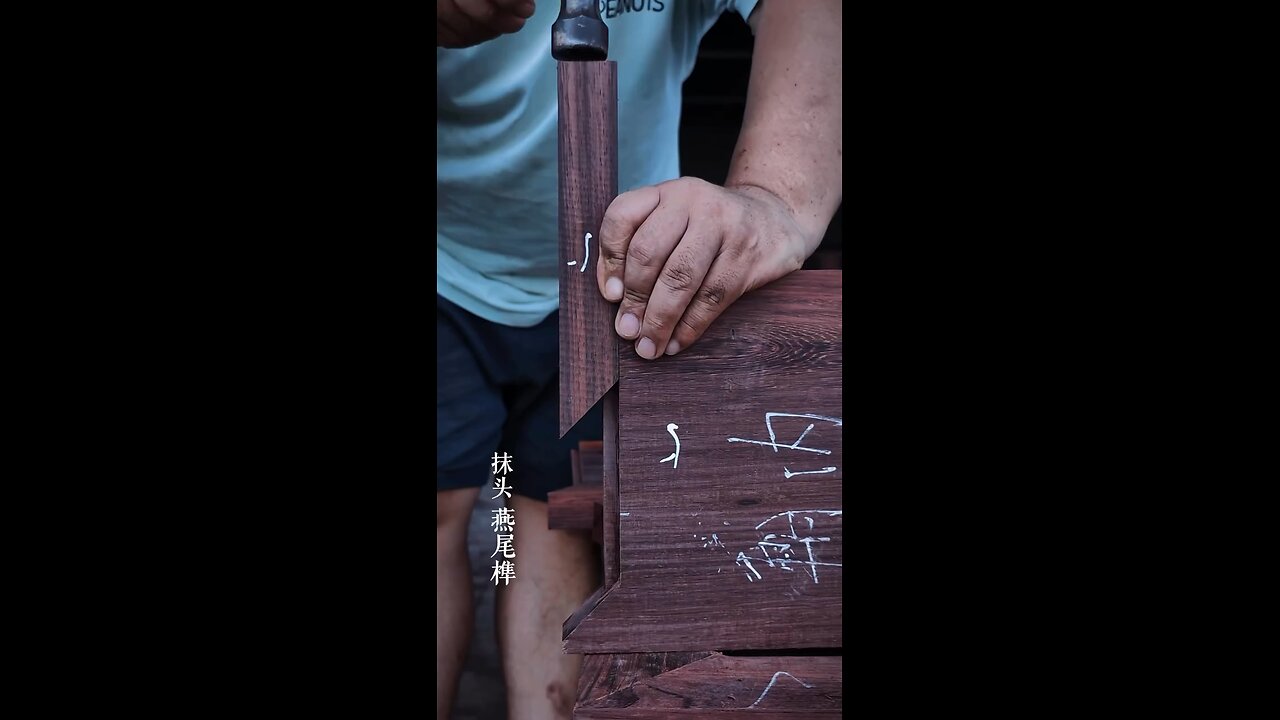Premium Only Content

How Japanese Table Joinery Is Done
In traditional Japanese woodworking, furniture is often joined without screws or nails through a technique called joinery, which involves using precise, interlocking wooden joints. These joints rely on the wood's natural strength, the craftsmanship, and the materials to hold the structure together. Here are some key techniques used:
1. Dovetail Joints (Kiwari-iri)
These are interlocking joints where the ends of two pieces of wood are shaped into wedge-like projections (called tails) and corresponding slots (called pins), creating a strong, durable connection.
Common in drawer construction and small furniture pieces, dovetail joints resist pulling apart, making them ideal for tight-fitting connections.
2. Mortise and Tenon Joints (Ho-iro-no-tsugi)
One of the most fundamental joinery methods. In this technique, one piece of wood (the tenon) fits precisely into a cavity (the mortise) in another piece of wood.
These joints are often used in structural furniture, such as in the framework of tables or chairs.
3. Lapped Joints (Kake-iri)
In lapped joints, two pieces of wood are overlaid and then interlocked, often with a slight bevel on the edges. This allows the pieces to fit snugly together.
Sometimes, the ends of the pieces are shaped to form a stronger bond, increasing the joint's stability.
4. Tusk Tenon Joints (Kakebi)
A variation of the mortise and tenon, where a projecting tenon (with a rectangular or square shape) is inserted into the mortise and held in place by a pin or peg.
5. Japanese Wooden Pegs (Sujigake)
In some cases, after creating a joint, small wooden pegs are driven through both pieces of wood to secure them in place.
These pegs are often used in combination with other joinery techniques, like mortise and tenon, and can be a decorative feature.
6. Kanawa or Sliding Dovetail
This joint involves one piece of wood sliding into a matching channel or groove in the other piece. It's often used for drawer assemblies and certain types of paneling.
7. Shaped Joints
Sometimes, Japanese furniture may feature custom-shaped joints where the edges of the wood are intricately carved to create a strong bond without additional fastening materials.
These joinery methods are designed not only to provide strong, durable furniture but also to highlight the natural beauty of the wood grain and the craftsmanship. Japanese joinery is often seen in traditional furniture such as tatami mats, chests (tansu), and futons. Additionally, many of these techniques don't require glue, as the interlocking nature of the joints holds the pieces together through tension and friction.
The skill of traditional Japanese carpenters has been passed down for centuries, and it is a significant part of Japan's cultural heritage.
-
 10:48
10:48
GritsGG
12 hours agoWarzone Stadium Easter Egg! Unlock Grau Blueprint EASY!
1.96K1 -
 LIVE
LIVE
Lofi Girl
3 years agolofi hip hop radio 📚 - beats to relax/study to
121 watching -
 1:43:54
1:43:54
TruthStream with Joe and Scott
3 days agoStuey and Elisa V interview Joe and Scott Q, AI, Glutathione, Tylenol etc 11/5 #510
6.12K4 -
 29:15
29:15
BlabberingCollector
2 days agoHarry Potter X Fortnite, Fans Reee Over Trans Rights, NEW Audiobooks Are OUT, Wizarding Quick Hits
26K1 -
 1:20:42
1:20:42
The Connect: With Johnny Mitchell
6 days ago $9.74 earnedThe Truth Behind The U.S. Invasion Of Venezuela: Ed Calderon Exposes American Regime Change Secrets
31.5K13 -
 2:10:18
2:10:18
FreshandFit
5 hours agoAfter Hours w/ Girls
123K25 -
 2:06:29
2:06:29
TimcastIRL
11 hours agoAirlines Cancel Over 700 Flights, Travel APOCALYPSE Is Now, Trump Says END FILIBUSTER | Timcast IRL
227K102 -
 9:02:44
9:02:44
SpartakusLIVE
15 hours agoTOXIC Solos on ARC Raiders || Friday Night HYPE - WZ or Redsec Later?
75.7K1 -
 2:15:42
2:15:42
TheSaltyCracker
8 hours agoWoke is DEAD ReeEEStream 11-07-25
121K214 -
 1:29:13
1:29:13
Sarah Westall
7 hours agoThe City of London: Infiltration, Intimidation & Centralized Power w/ Mike Harris
49.1K13